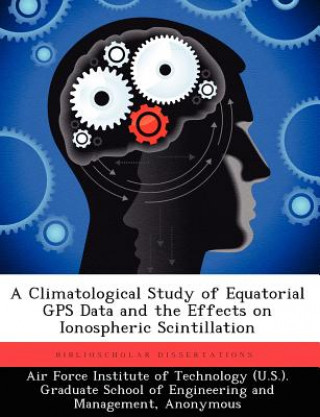
Livraison
Guide d'achat
16 124 818 livres à l’intérieur 175 langues






Afficher toutes les langues (175)
2 047 051 livres numériques à l’intérieur 101 langues






Afficher toutes les langues (101)





Cela ne vous convient pas ? Aucun souci à se faire ! Vous pouvez renvoyer le produit dans les 30 jours
 Bon d’achat
n'importe quelle valeur
Bon d’achat
n'importe quelle valeur
Impossible de faire fausse route avec un bon d’achat. Le destinataire du cadeau peut choisir ce qu'il veut parmi notre sélection.
Climatological Study of Equatorial GPS Data and the Effects on Ionospheric Scintillation
 Anglais
Anglais
 157 b
157 b
 common.delivery_to
common.delivery_to
Politique de retour sous 30 jours
Ceci pourrait également vous intéresser


Ionospheric scintillation is detrimental to radio signals, especially those from the global positioning system. Such scintillation is caused when a signal permeates the ionosphere through plasma bubbles. The signal's phase and amplitude can be altered, and a receiver on the ground can lose lock on the GPS signal. Measured using a zero to one index known as S4, scintillation severity is based upon season, solar cycle, time of day, location and frequency. The most severe scintillation occurs at the equatorial anomaly, or fifteen degrees north and south of the equator. Seven years of data from fifteen different locations around the equator were used in a Matlab program to determine if the current trends still apply. Previous research has found the S4 at the equator to peak during the months of September to March, between the hours of 2000 and 0300 local time, and when the sunspot number is above 60. Matlab plots were generated to find peaks in scintillation based upon location and month. These were compared to sunspot numbers during those months. A new Matlab program was made to compile all of the plots into a climatological map of the seasonal data. Trends similar to those found previously were discovered. S4 numbers peaked in the area of the anomaly, and between the months of October to March. As the sunspot number increased, the yearly average scintillation also increased. The hours of 000 to 0300 GMT also saw a peak in S4 scintillation, which agrees with previous findings. This research showed that solar maximum years, the hours of 000 to 0300 GMT, and the months of October through March have the largest amount of scintillation.
À propos du livre
 Anglais
Anglais
Catégories


 Contact
Contact Comment faire ses achats
Comment faire ses achats
















